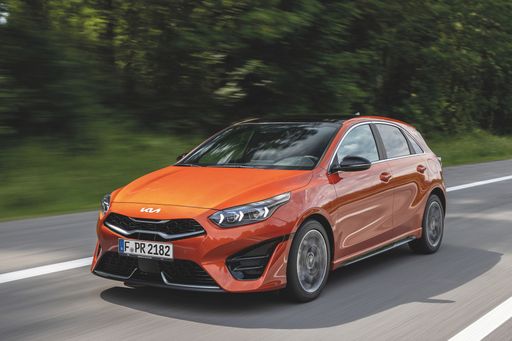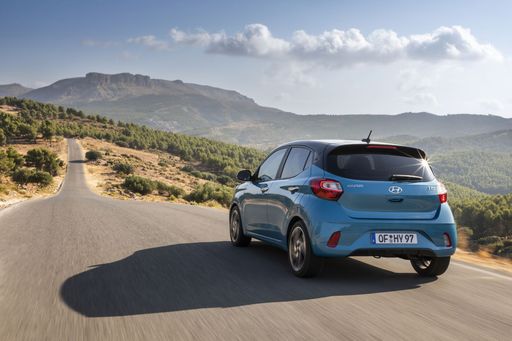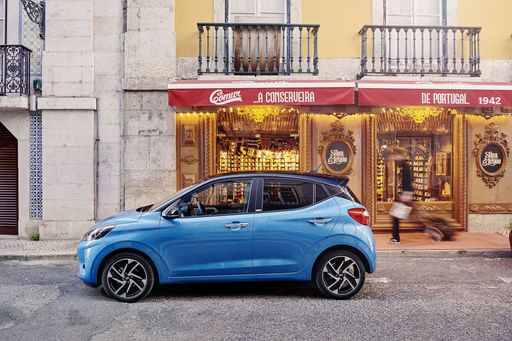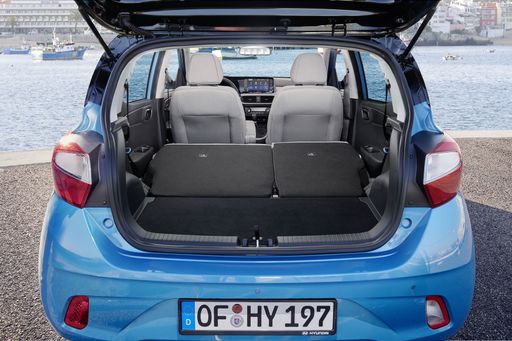Hyundai i10 vs Kia Ceed - Differences and prices compared
Costs and Efficiency:
When it comes to price and running costs, the biggest differences usually appear. This is often where you see which car fits your budget better in the long run.
Hyundai i10 has a significantly advantage in terms of price – it starts at 14600 £, while the Kia Ceed costs 23500 £. That’s a price difference of around 8915 £.
Fuel consumption also shows a difference: Hyundai i10 manages with 4.90 L and is therefore evident more efficient than the Kia Ceed with 6 L. The difference is about 1.10 L per 100 km.
Engine and Performance:
Power, torque and acceleration are the classic benchmarks for car enthusiasts – and here, some clear differences start to show.
When it comes to engine power, the Kia Ceed has a evident edge – offering 140 HP compared to 90 HP. That’s roughly 50 HP more horsepower.
In acceleration from 0 to 100 km/h, the Kia Ceed is clearly perceptible quicker – completing the sprint in 9.50 s, while the Hyundai i10 takes 11.40 s. That’s about 1.90 s faster.
In terms of top speed, the Kia Ceed performs to a small extent better – reaching 197 km/h, while the Hyundai i10 tops out at 175 km/h. The difference is around 22 km/h.
There’s also a difference in torque: Kia Ceed pulls evident stronger with 253 Nm compared to 172 Nm. That’s about 81 Nm difference.
Space and Everyday Use:
Beyond pure performance, interior space and usability matter most in daily life. This is where you see which car is more practical and versatile.
Seats: offers more seating capacity – vs .
In curb weight, Hyundai i10 is evident lighter – 996 kg compared to 1298 kg. The difference is around 302 kg.
In terms of boot space, the Kia Ceed offers evident more room – 395 L compared to 252 L. That’s a difference of about 143 L.
In maximum load capacity, the Kia Ceed performs to a small extent better – up to 1291 L, which is about 241 L more than the Hyundai i10.
When it comes to payload, Kia Ceed a bit takes the win – 490 kg compared to 423 kg. That’s a difference of about 67 kg.
Who comes out on top?
Overall, the Kia Ceed shows itself to be wins the duel decisively and secures the title of DriveDuel Champion.
It convinces with the more balanced overall package and proves to be the more versatile choice for everyday use.
 @ Kia Corporation
@ Kia Corporation
Kia Ceed
Costs and Consumption
View detailed analysis
Engine and Performance
View detailed analysis
Dimensions and Body
View detailed analysis
Hyundai i10
The Hyundai i10 is a cheeky city car that squeezes big-car confidence into a pocket-friendly package, carving through tight streets with surprising composure and sensible practicality. For buyers after low fuss, sensible equipment and wallet-friendly running costs, it's a smart, no-nonsense pick that makes sense whether you're a first-time driver or need a reliable second car.
details @ Hyundai Motor Company
@ Hyundai Motor Company
 @ Hyundai Motor Company
@ Hyundai Motor Company
 @ Hyundai Motor Company
@ Hyundai Motor Company
 @ Hyundai Motor Company
@ Hyundai Motor Company
 @ Hyundai Motor Company
@ Hyundai Motor Company
Kia Ceed
The Kia Ceed is a sensible, stylish hatchback that gives buyers more than they'd expect for the money, blending practical space with crisp, modern looks. It drives with measured confidence and comes loaded with user-friendly kit, so you can enjoy daily life behind the wheel without breaking into a sweat.
details @ Kia Corporation
@ Kia Corporation
 @ Kia Corporation
@ Kia Corporation
 @ Kia Corporation
@ Kia Corporation
 @ Hyundai Motor Company
@ Hyundai Motor Company
|
 @ Kia Corporation
@ Kia Corporation
|
|
|
|
Costs and Consumption |
|
|---|---|
|
Price
14600 - 19000 £
|
Price
23500 - 26300 £
|
|
Consumption L/100km
4.9 - 5.5 L
|
Consumption L/100km
6 - 6.4 L
|
|
Consumption kWh/100km
-
|
Consumption kWh/100km
-
|
|
Electric Range
-
|
Electric Range
-
|
|
Battery Capacity
-
|
Battery Capacity
-
|
|
co2
110 - 124 g/km
|
co2
137 - 146 g/km
|
|
Fuel tank capacity
36 L
|
Fuel tank capacity
50 L
|
Dimensions and Body |
|
|---|---|
|
Body Type
Hatchback
|
Body Type
Hatchback
|
|
Seats
4 - 5
|
Seats
5
|
|
Doors
5
|
Doors
5
|
|
Curb weight
996 - 1099 kg
|
Curb weight
1298 - 1372 kg
|
|
Trunk capacity
252 L
|
Trunk capacity
357 - 395 L
|
|
Length
3670 - 3675 mm
|
Length
4315 mm
|
|
Width
1680 mm
|
Width
1800 mm
|
|
Height
1480 - 1483 mm
|
Height
1447 mm
|
|
Max trunk capacity
1050 L
|
Max trunk capacity
1253 - 1291 L
|
|
Payload
344 - 423 kg
|
Payload
478 - 490 kg
|
Engine and Performance |
|
|---|---|
|
Engine Type
Petrol
|
Engine Type
Petrol, Petrol MHEV
|
|
Transmission
Manuel, Automatic
|
Transmission
Manuel, Automatic
|
|
Transmission Detail
Manual Gearbox, Automated Manual
|
Transmission Detail
Manual Gearbox, Dual-Clutch Automatic
|
|
Drive Type
Front-Wheel Drive
|
Drive Type
Front-Wheel Drive
|
|
Power HP
63 - 90 HP
|
Power HP
100 - 140 HP
|
|
Acceleration 0-100km/h
11.4 - 18.4 s
|
Acceleration 0-100km/h
9.5 - 13.2 s
|
|
Max Speed
143 - 175 km/h
|
Max Speed
178 - 197 km/h
|
|
Torque
93 - 172 Nm
|
Torque
172 - 253 Nm
|
|
Number of Cylinders
3 - 4
|
Number of Cylinders
3 - 4
|
|
Power kW
46 - 66 kW
|
Power kW
74 - 103 kW
|
|
Engine capacity
998 - 1197 cm3
|
Engine capacity
998 - 1482 cm3
|
General |
|
|---|---|
|
Model Year
2024
|
Model Year
2024
|
|
CO2 Efficiency Class
C, D
|
CO2 Efficiency Class
E
|
|
Brand
Hyundai
|
Brand
Kia
|
Is the Hyundai i10 offered with different drivetrains?
The Hyundai i10 is offered with Front-Wheel Drive.
The prices and data displayed are estimates based on German list prices and may vary by country. This information is not legally binding.
